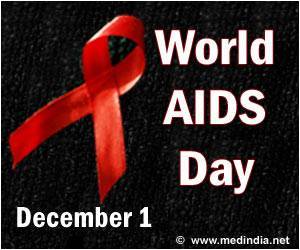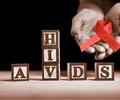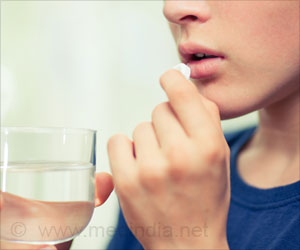World AIDS Day is celebrated on 1st December every year. It aims to raise global awareness about AIDS. The 2019 focus is on the vital contribution of communities for making the global AIDS response successful.
- World AIDS Day is celebrated on 1st December every year
- It aims to raise global awareness about the dangers of AIDS
- This year, it recognizes the vital role played by communities for making the AIDS response a grand success
Every year, people from all walks of life across the globe collectively bring attention to the devastating consequences of AIDS, the urgency for rooting out stigma and discrimination, and moving forward the global agenda for eventually ending the global AIDS pandemic.
World AIDS Day was established in 1988 and was the very first Global Health Day to be observed by the United Nations (UN). Therefore, this year marks the 30th Anniversary of World AIDS Day. Since its inception three decades ago, extraordinary progress has been made in the areas of prevention and treatment of HIV/AIDS. Effective preventive methods, such as pre-exposure prophylaxis (PrEP) and post-exposure prophylaxis (PEP) are now available.
Highly effective antiretroviral (ARV) drugs that specifically target HIV, allow infected individuals to live long, healthy lives and prevent transmission of the virus to others.
Read More..
World AIDS Day Theme for 2019
The 2019 theme for World AIDS Day is “Communities Make the Difference”, which has been proposed by UNAIDS and highlights the importance of community participation for ending the AIDS pandemic. Importantly, the huge strides that have been made so far in tackling HIV/AIDS have been made possible by the active participation of communities across the globe. Thousands of community health workers, counselors, educators, and networks of people living with HIV/AIDS or affected by the epidemic have contributed immensely to the success of the global AIDS response so far.How are Communities Making a Difference?
Communities around the world are making an enormous difference to the lives of people living with HIV/AIDS in the following ways:- Spearheading the fight against HIV/AIDS
- Promoting HIV prevention
- Demanding access to HIV treatment
- Helping pregnant women living with HIV to have HIV-free babies
- Demanding harm reduction
- Acting to change laws that discriminate people living with HIV/AIDS
AIDS and its Complications
AIDS is one of the most devastating pandemics in human history. Despite the fact that it was only discovered in 1984, it has claimed more than 32 million lives over this short span of time. AIDS develops over a period of 2-15 years following HIV infection. AIDS can affect anyone, although high-risk groups can be affected more.HIV/AIDS can be diagnosed by rapid diagnostic tests (RDTs) that provide results the same day. HIV/AIDS is treated by antiretroviral (ARV) drugs. Notably, ARVs have saved countless lives over the decades. For example, between 2000 and 2018, new HIV infections fell by 37 percent and HIV-related deaths fell by 45 percent, saving approximately 13.6 million lives.
Therefore, with proper treatment, AIDS patients can live long and healthy lives. However, without treatment, they can develop life-threatening complications such as tuberculosis (TB), bacterial meningitis, and fungal infections, as well as several types of cancer, including Kaposi’s sarcoma and lymphoma. Currently, there is no cure for AIDS.
AIDS: Facts & Figures
- 32 million lives have been claimed by AIDS so far
- 37.9 million people worldwide are living with AIDS
- Two-thirds of all people living with AIDS (25.7 million people) live in Africa
- 53 percent of people have suppressed the virus with low risk of infecting others
- 62 percent of adults and 54 percent of children with AIDS in low- and middle-income countries (LMICs) are receiving lifelong anti-retroviral therapy (ART)
- 82 percent of pregnant and breastfeeding women living with AIDS are receiving ART
- 79 percent of people are currently diagnosed with HIV
- 1.7 million people became newly infected with HIV in 2018
- 770,000 people died from HIV-related causes in 2018
- 54 percent of new HIV infections in 2018 occurred in key population groups such as men who have sex with men (MSM), injecting drug users (IDU), sex workers, and the LGBTQ community
- MSMs and IDUs are 22-times more likely to acquire HIV
- Female sex workers are 21-times more likely to acquire HIV
- Transgender women are 12-times more likely to acquire HIV
- Every hour, nearly 30 adolescents become infected with HIV
- 3 in 4 adolescent girls are becoming newly infected with HIV
- Over 400 children are born with HIV every day
- 50 percent of HIV+ children receive timely testing and treatment
- 2 in 3 HIV+ children receive suboptimal medications and don’t achieve viral suppression
How is World AIDS Day Celebrated?
World AIDS Day is celebrated through numerous fundraising events and activities with widespread participation across the world. The major objectives of these celebrations are to raise awareness about AIDS, show solidarity for people living with the disease, and challenge stigma and discrimination against AIDS patients.‘Red’ is the awareness color for World AIDS Day and the red ribbon is the universal symbol of awareness in support of people living with AIDS. Therefore, wearing a red ribbon is a great way to raise awareness and show solidarity for people with AIDS. It will also help to raise funds from the sales for improving care for AIDS patients.
Global Initiatives to End the AIDS Pandemic
There are several global initiatives that aim to reduce disease burden and eventually eliminate HIV/AIDS. Two major initiatives are highlighted below:- UNAIDS’s 90-90-90 Initiative: The UNAIDS has launched the ambitious 90-90-90 initiative to reduce the global burden of HIV/AIDS by 90 percent by 2020. The salient features of this initiative are highlighted below:
- 90 percent of all infected people will know their HIV status by 2020
- 90 percent of all diagnosed patients will receive ART by 2020
- 90 percent of patients receiving ART will have viral suppression by 2020
- Sustainable Development Goals (SDG): The SDGs ensure that no one is left behind in the fight against AIDS. Of the 17 SDGs, ten of these have a direct bearing on the response to AIDS. A few of these are listed below:
- SDG 1: End poverty
- SDG 2: End hunger
- SDG 3: Ensure healthy lives
- SDG 4: Ensure quality education
- SDG 5: Achieve gender equality
- SDG 10: Reduce inequality
Tips for Preventing HIV Transmission: The WHO ‘ACCESS ++’ Strategy
The key features of the WHO ‘ACCESS ++’ Strategy for halting the spread of HIV is highlighted below:Awareness and education
Condom use – both male and female condoms
Circumcision for boys and men
Ending stigma and discrimination
Safe blood and injections
Sterile equipment and harm reduction for people who use drugs
+ HIV medicines used before (PrEP) and after (PEP) HIV exposure
+ HIV treatment and viral suppression
Conclusion
World AIDS Day serves as a reminder to civil society and governments across the globe that AIDS has not gone away and there is still a vital need to increase awareness, raise funds, fight stigma, and improve healthcare services. These activities will go a long way to end the AIDS pandemic once and for all.References:
- World AIDS Day 2019 - (https://www.who.int/campaigns/world-aids-day/2019)
- HIV/AIDS - (https://www.who.int/news-room/fact-sheets/detail/hiv-aids)
- Communities Make the Difference - (https://www.unaids.org/en/resources/campaigns/WAD_2019)
- 90-90-90: Treatment for All - (https://www.unaids.org/en/resources/909090)
- AIDS and the Sustainable Development Goals - (https://www.unaids.org/en/AIDS_SDGs)
Source-Medindia
















